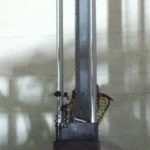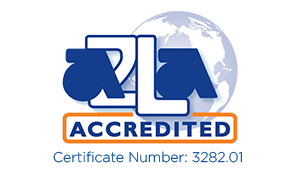Drop Tower Testing
Drop tower testing is a form of impact testing used to measure energy absorbed by a material during high velocity impacts. The test system consists of a falling mass guided by two columns, instrumentation to measure force, fixture to hold the sample, and data collection system. This test is used for a component or an assembly.
Main Uses
 Major uses are for assessing automotive components like energy absorbers, frontal collision behavior, side impact collision, etc. Other uses include assessing shatter resistance of coatings on materials, puncture resistance of fabrics, axial collapse behaviors of columns and pipes, delamination behaviors of woven fiber composites and laminates.
Major uses are for assessing automotive components like energy absorbers, frontal collision behavior, side impact collision, etc. Other uses include assessing shatter resistance of coatings on materials, puncture resistance of fabrics, axial collapse behaviors of columns and pipes, delamination behaviors of woven fiber composites and laminates.
Specimen Geometry and Preparation
The test does not require much preparation unlike other standard tests except that this must be fixtured so that when the hammer falls it is in the same direction as it would experience loading in service. For example, testing pipes and tubular components the sample may be positioned with the tube axis parallel to the hammer falling direction. If a side impact is required the tubes may be positioned with the axis normal to the hammer.
Capability – At TTL, we have a 20’ tall vertical drop tower with 132 Lbs weight for testing large metallic components and assemblies (See figure). The larger hammer is instrumented so that collision forced can be measured. In addition, we have a smaller bench scale unit for assessing shaper resistance of coating, puncture resistance of fabrics, delamination of laminates and composites. The tests are generally conducted at ambient condition. If non- ambient conditions, such as low temperatures, are required we can engineer a system to test at low temperatures.
Typical standards used:
- ASTM D1709 – Standard Test Methods for Impact Resistance of Plastic Film by the Free-Falling Dart Method
- ASTM D2444 – Standard Test Method for Determination of the Impact Resistance of Thermoplastic Pipe and Fittings by Means of a Tup (Falling Weight)
- ASTM D3763 – Standard Test Method for High Speed Puncture Properties of Plastics Using Load and Displacement Sensors
- ASTM D7136 – Standard Test Method for Measuring the Damage Resistance of a Fiber-Reinforced Polymer Matrix Composite to a Drop-Weight Impact Event



Touchstone is committed to providing its customers with quality, reliable test results. That is why we have undertaken the rigorous steps needed to meet and secure the most stringent of test lab accreditations including ISO/IEC 17025, NADCAP 7101 (Materials Test Lab) and NADCAP 7122-I (Non-Metallics Materials Testing).
© 2024, Touchstone Testing Labs | Design by Wheelhouse Creative

